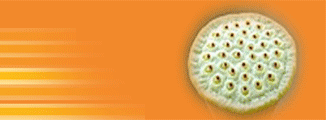Medicinal Plants
by Physician Lee Song Cheong
& Bro. Ooi Chooi Seng
|
In India, the fruit is regarded as a tonic for the brain and liver. An infusion of the fruit acts as a diuretic. A sweetened preparation of the flowers is believed to reduce fever. The seeds are employed against diarrhea, dysentery and catarrh. The leaf decoction is applied to sore eyes, also serves as a diuretic and expectorant and treatment for rheumatism. The juice of macerated leaves is taken as a febrifuge.
|
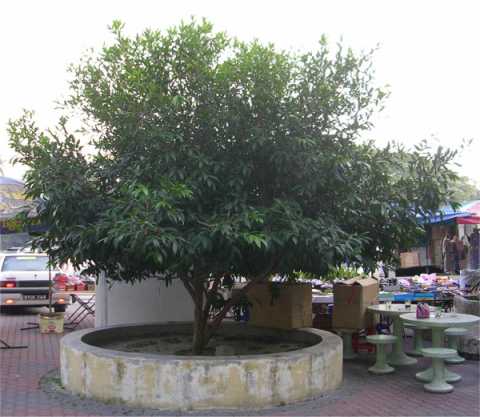
A Rose Apple Plant
|
Powdered leaves have been rubbed on the bodies of smallpox patients for the cooling effect. The bark has been used for tanning and yields a brown dye. The bark contains 7-12.4% tannin. It is emetic and cathartic. The decoction is administered to relieve asthma, bronchitis and hoarseness. A yellow essential oil, distilled from the leaves, contains, among other properties, 26.84% dl-a-pinene and 23.84% l-limonene, and can be resorted to as a source of these elements for use in the perfume industry.
An unknown amount of hydrocyanic acid has been reported in the roots, stems and leaves. An alkaloid, jambosine, has been found in the bark of the tree, of the roots and seeds. The roots and seeds are considered poisonous. In Nicaragua, it has been claimed that an infusion of roasted, powdered seeds is beneficial to diabetics. They say in Colombia that the seeds have an anesthetic property. Cuban people believe that the root is an effective remedy for epilepsy.
|
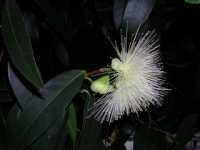
Rose Apple Flowers
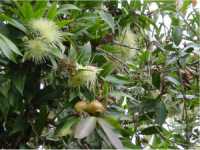
Rose Apple Flowers and Fruits
|
Native to the Malaysia, it is wide spread through out the equatorial regions and can be found in India, in most of Southern Asia, the East Indies and have also been introduced into the West Indies. This attractive tree has glossy narrow leaves and dark red new growth. Leaves are about 3 cm wide and 10 to 15 cm long. The yellowish to red fruit is 'rose petal' flavoured and is about 3-4 cm diameter. It is in a class of its own for taste. The tree is virtually never without fruit or flowers, fruiting for about 6 months of the year. The white fluffy flowers about 5 to 6 cm across are spectacular and attract many bees and birds with their fragrance. The trees can grow to an average height of 5-7 meters.
|
In the Story of the Life of the Buddha, when he was a young Prince at the age of seven, during the Ploughing Festival, Siddhattha had gone with his father to watched the ploughing. Placing the Prince under the cool shade os a solitary Rose Apple tree to be watched by the nurses, the King participated in the ploughing festival. Siddhattha fell asleep. Seeing that Siddhattha was sleeping, his nurses joined in the festivities of the day. When
Siddhattha awoke, he looks across the fields and sees a lizard eating the insects disturbed by the ploughing. He then saw a snake going to eat the lizard and an eagle about to eat the snake. He is saddened by this. Thus Siddhattha then sits under the Rose Apple tree in meditation while the festivities continue.
It was a striking contrast to the mirth and merriment of the festival. It was all calm and quiet under the Rose Apple tree. All the conditions conducive to quiet meditation being there, the pensive Prince, young in years but old in wisdom, set cross legged in meditation. The Prince's nurses, who has abandoned their precious charge to join the festival, suddenly realizing their duty, hastened to the Prince and was amazed to see him cross legged in deep meditation. King Suddhodana hearing of this, hurried to the spot and is relieved to find his son safe and in meditative posture, the King was so pleased that he immediately saluted the Prince but, is worried that he is meditating. He wants him to be a world ruler - not a Buddha.
|
 Prince Siddhattha under
Prince Siddhattha under
The Rose Apple Tree
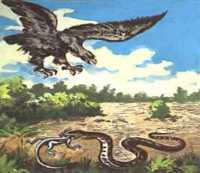 Prince Siddhattha saw
Prince Siddhattha saw
the Chain of Life
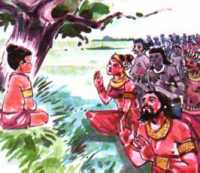 King Suddhodana paid
King Suddhodana paid
respect to Prince Siddhattha
|
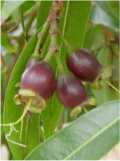
Rose Apple Fruits. |
|
Scientific name: Eugenia jambos Aubl., = Syzygium jambos,
Common name: Rose Apple,
Malay name: Jambu Mawah,
Indian name: Veli jambu
Singalese name: Seeni jambu
|
 |
click to print this article |
 |
back to medicinal plants archive |
 |
back to articles archive |
 |
back to e-zine main |
|
|

